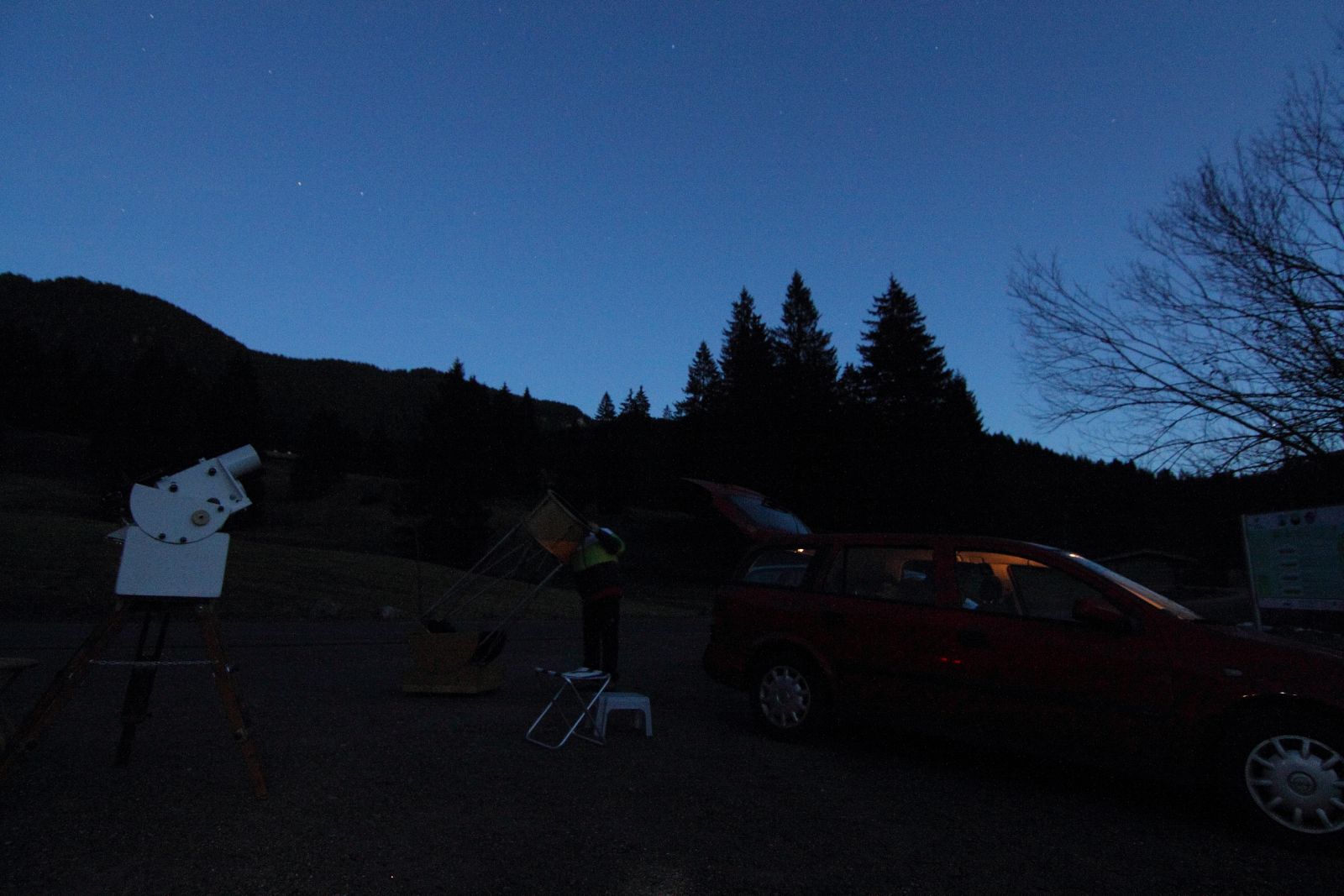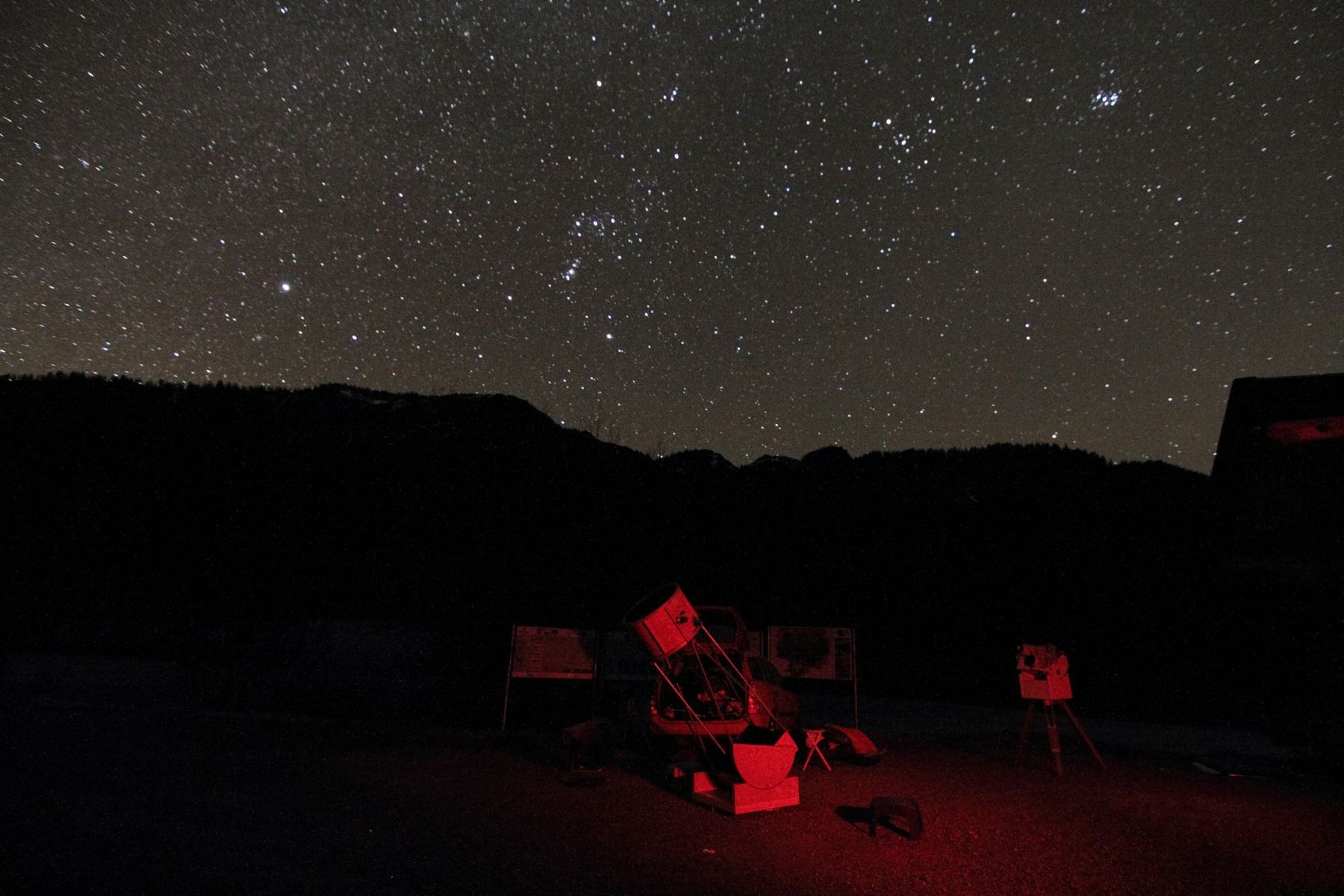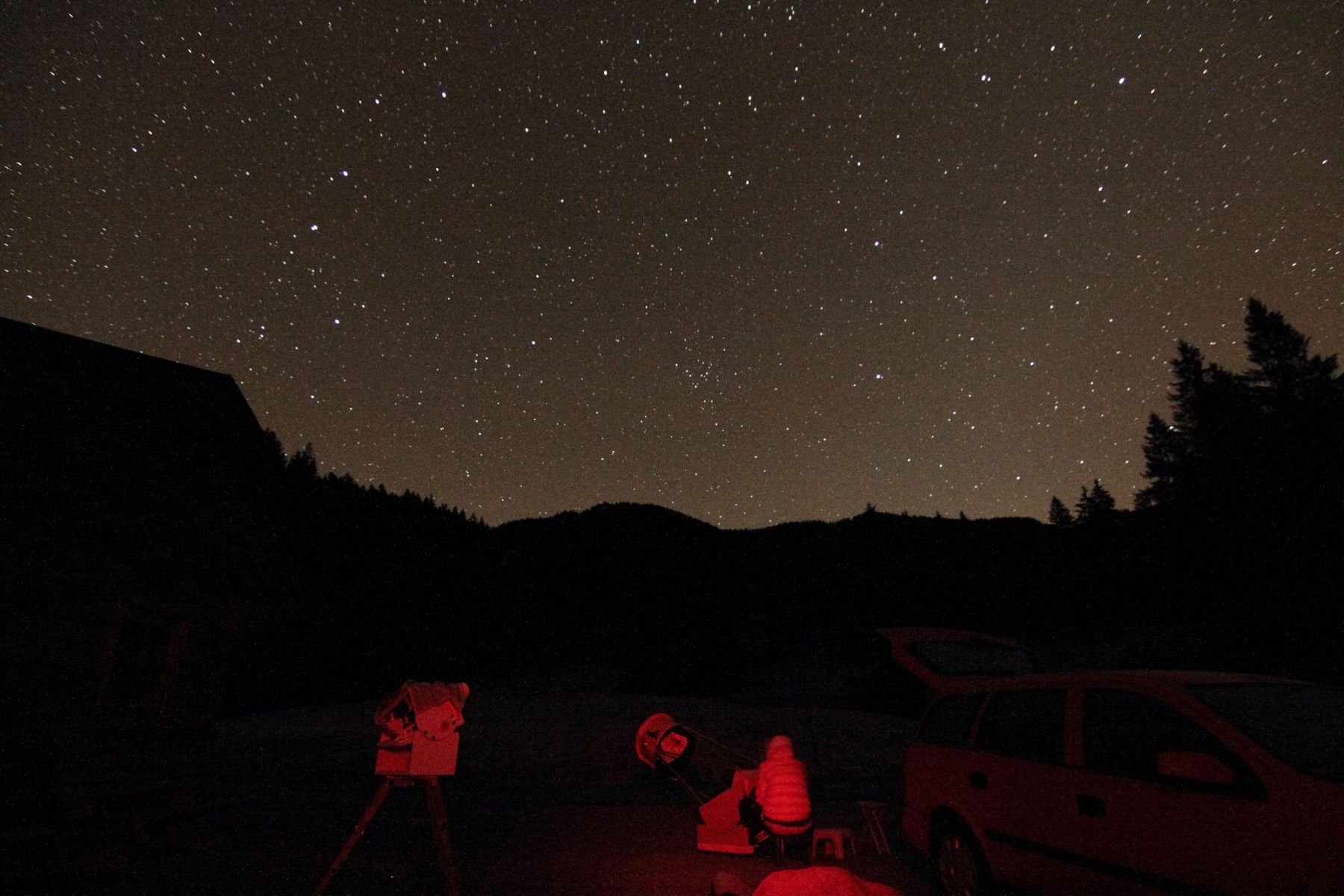17:30 CET: Ralph at his 20", at left his self-made 4" Bino-Refractor Dobson

18:23 CET: Observing the Helix Nebula

17:30 CET: Ralph at his 20", at left his self-made 4" Bino-Refractor Dobson
|
18:23 CET: Observing the Helix Nebula
|
Among others we had a detailed observation of M33 und the Helix Nebula in the 20", and of the
North America Nebula and the rich cluster NGC 7789 in the 4" Bino.
And for many hours we heard a concerto of the tawny owls, both the hooting „Huh-Huhuhu-Huuuh“
of the male
and the short "Kuwitt"
of the female. And in the morning we saw and heard a buzzard with its cat-like birdcall,
and a pair of flying ravens showing some acrobatic flight maneuvers.
19:17 CET: Summer triangle
|
21:32 CET: Orion is rising
|
About 22:00 the expected clouds arrived, and we went into our sleeping bags.
Only to get up again around 3:00 when it was clear again, with better transparency but poor seeing.


The clear morning sky offered the opportunity to look at the supernova in the galaxy M61, which has been reported to have dropped in
brightness to about mag 15. I like M61 for its unique appearance with its rather angular shape, not least the angular spiral arm
in the East - and just on the inside of it is a supernova, so I looked forward to see it. Our problem was not only the constantly fogged
eyepieces, but also the beginning frost-cover on both the primary and secondary mirror. Having no other devices at hand we started
to warm both with our bare hands, and it eventually worked. In the end I could discern the SN with 7mm Nagler (285 x) with averted
vision, the poor seeing made it more difficult as you would normally expect with a 20".

5:40 CET: The 20" is directed at M61The zodiacal light is seen along the zodiac.
|
M61 with supernovaImage by Kunihiro Shima on Nov 22, 2014
|